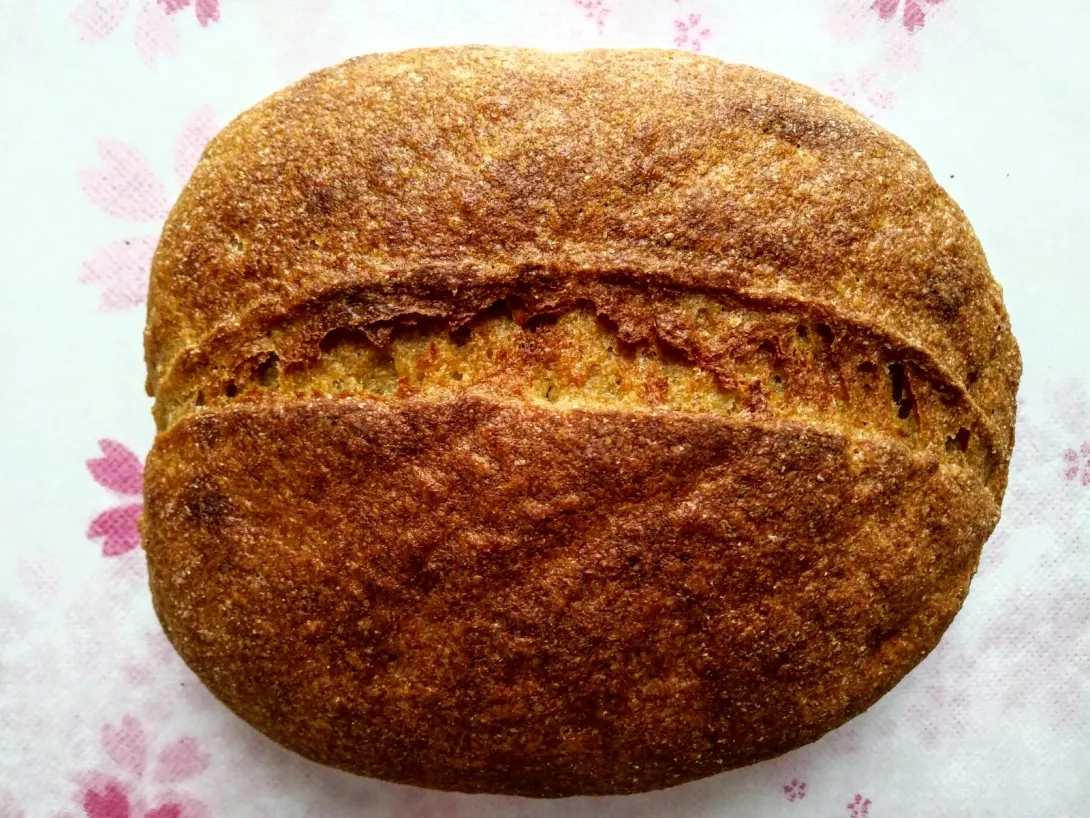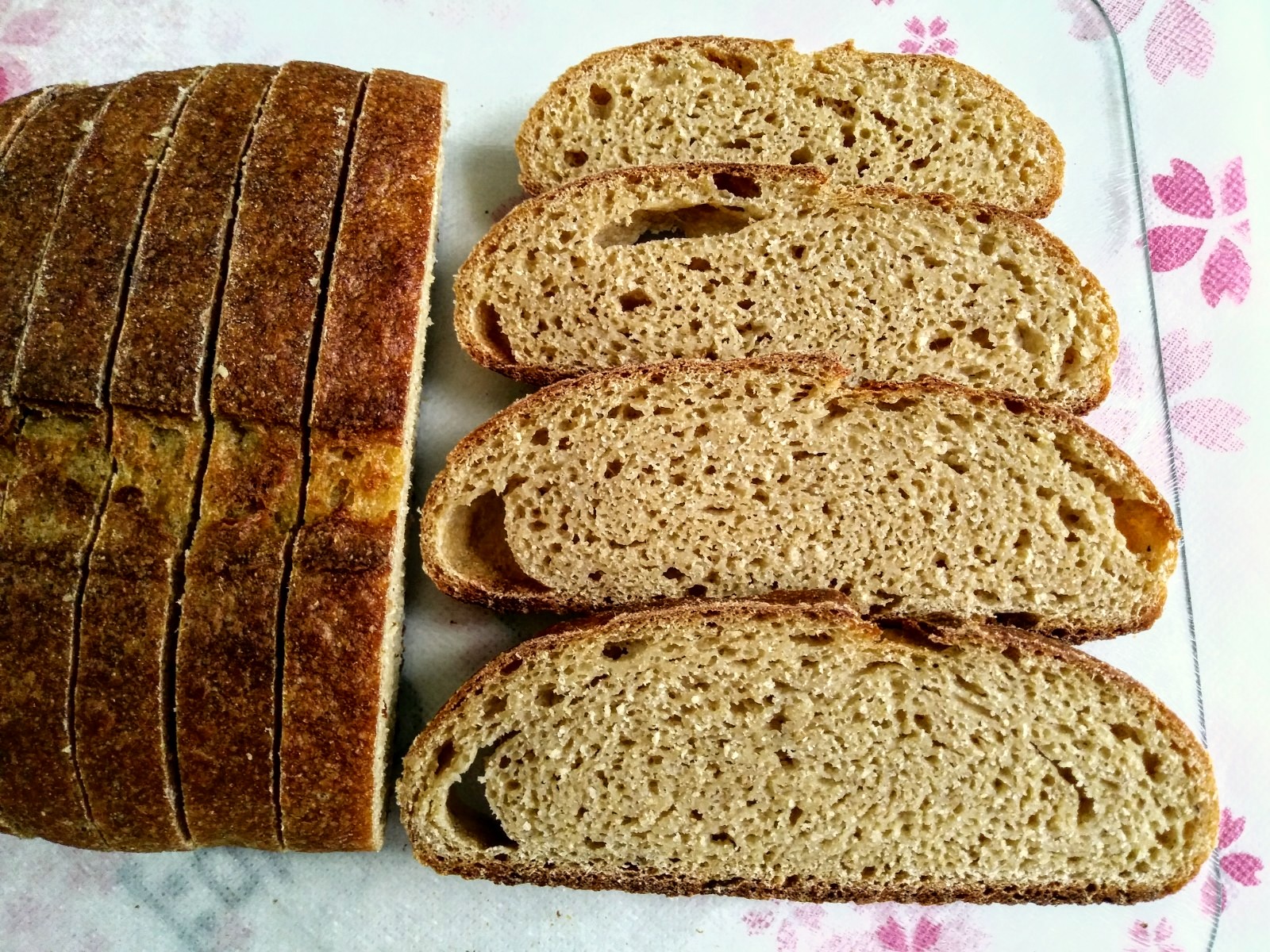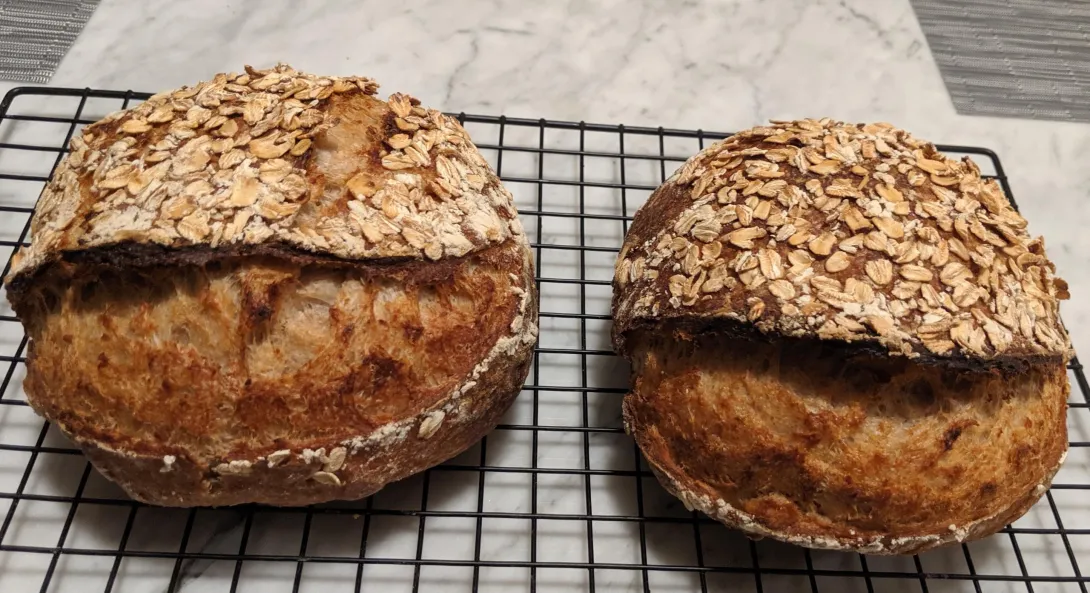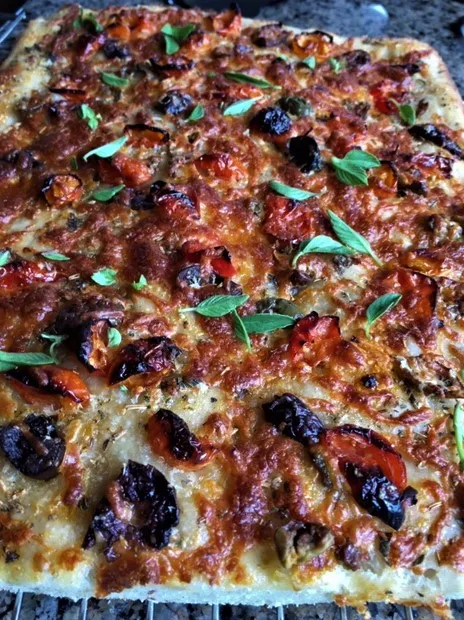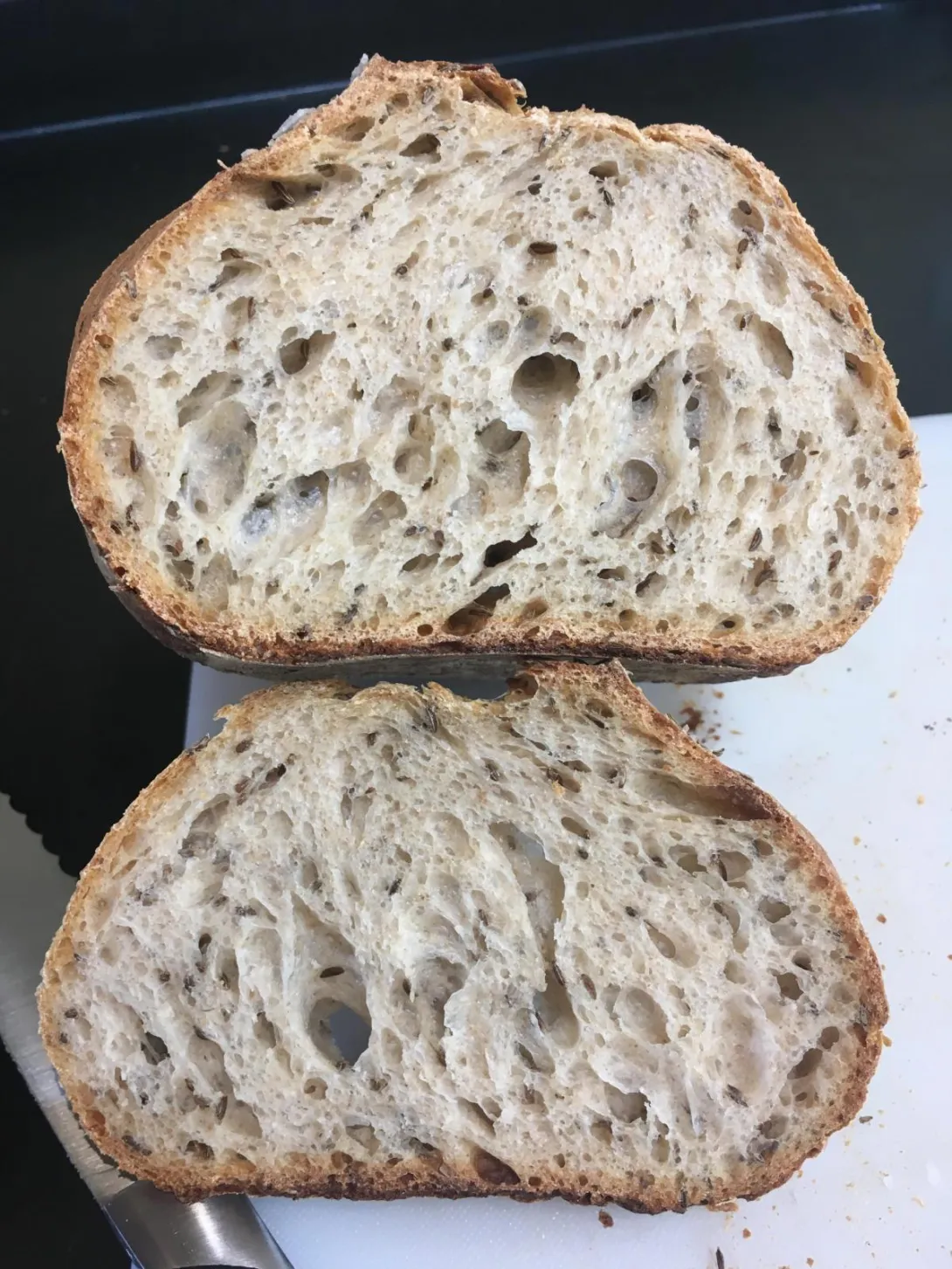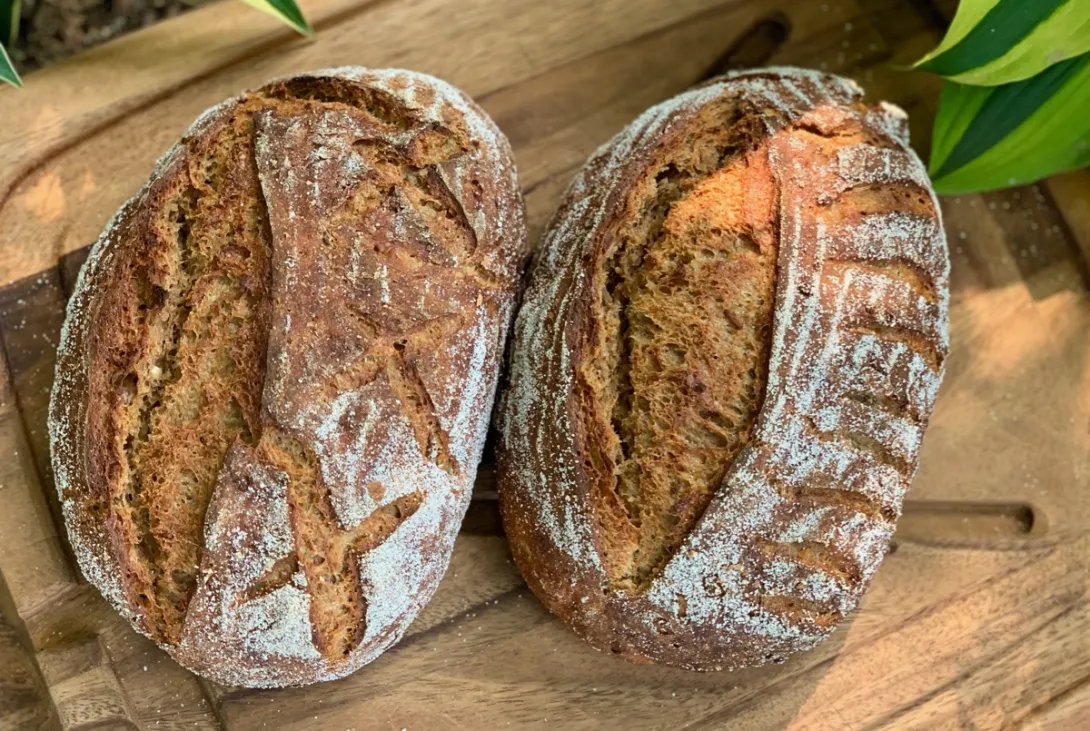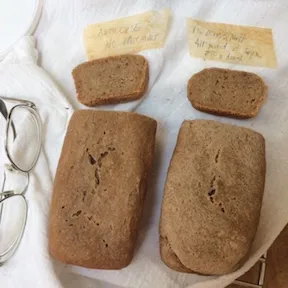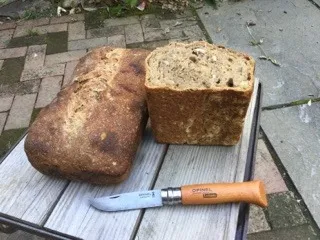getting back to baking - a simple mixed flour bake
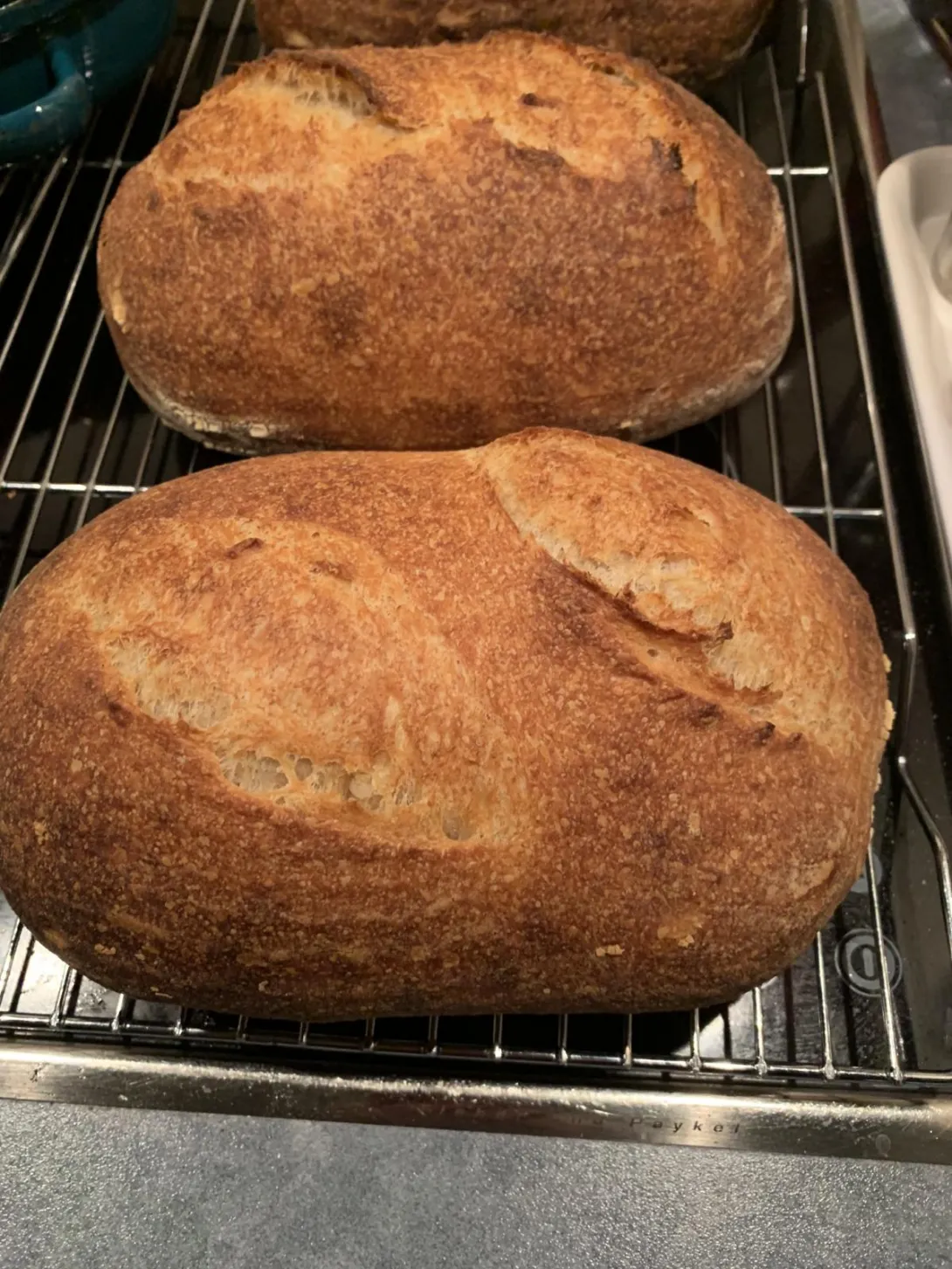
It’s been quite a while since I posted except for the CB earlier this week. I pulled my starter out of the fridge on Sunday and did one refresh. Then 9:15 pm mixed the levain
9 g starter + 44 g water + 44 g flour and left on the bench over night.
Monday am popped it in the microwave to warm up as room temp was only 12°C, brrrrr. once it was nice and bubbly mixed final dough
335 g bread flour + 6 g gluten flour
94 g Durum
60 g freshly milled whole wheat
37 g freshly milled spelt
360 g water.
- Log in or register to post comments
- 12 comments
- View post
- leslieruf's Blog
